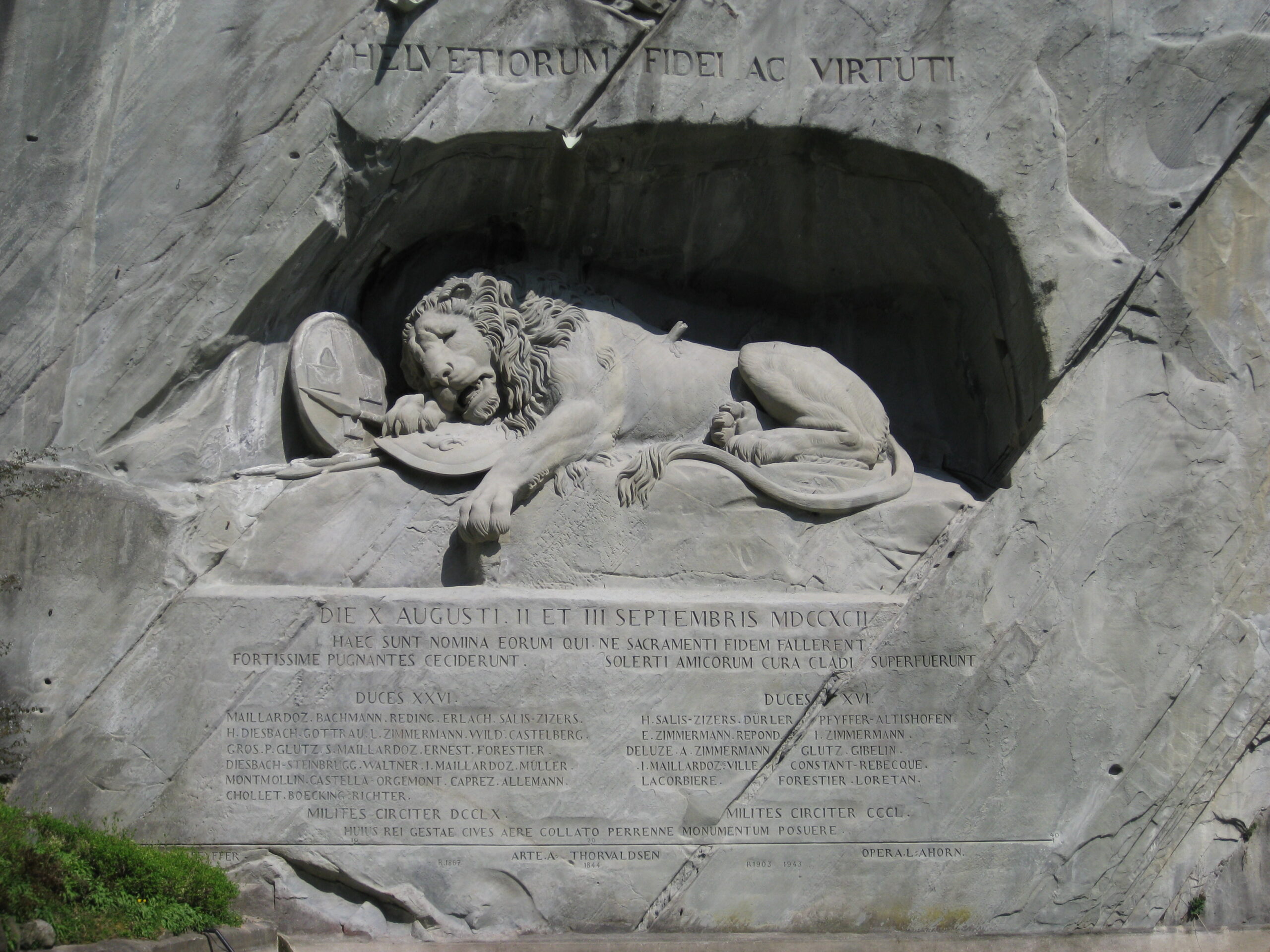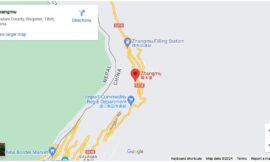The Lion of Lucerne, or the Lion Monument, is an iconic and poignant sculpture that graces the city of Lucerne, Switzerland. Carved into a sandstone rock face, this majestic monument commemorates the Swiss Guards who lost their lives during the French Revolution in 1792. Sculpted by Bertel Thorvaldsen, the Lion of Lucerne is a masterpiece that evokes deep emotions, blending artistry with historical significance.
The Lion Monument is situated in the Lowenplatz (Lion Square) in Lucerne, near the Old Town and a short walk from the shores of Lake Lucerne. Carved directly into a sandstone rock face, the sculpture depicts a dying lion with a spear impaled in its side. The lion lies against a shield bearing the fleur-de-lis of the French monarchy, and above it, a broken spear symbolizes the Swiss Guards’ defeat.
The emotional weight of the Lion Monument is palpable, and its creation was driven by a desire to honor the sacrifice of the Swiss Guards during the storming of the Tuileries Palace in Paris. The guards, loyal to King Louis XVI of France, were stationed in the palace and valiantly defended it against the revolutionaries. Unfortunately, they were overwhelmed, and many lost their lives.
Bertel Thorvaldsen, a Danish sculptor of international acclaim, was commissioned to create the Lion Monument in memory of the fallen Swiss Guards. Thorvaldsen, who was living in Rome at the time, crafted the monument between 1819 and 1821. The sculptor never visited Lucerne but worked from descriptions and sketches to bring the monument to life.
The Lion Monument is a testament to Thorvaldsen’s artistic prowess. The intricacies of the carving, from the lion’s expressive face to the details of its mane, showcase the sculptor’s ability to evoke deep emotions through stone. The lion’s posture, with its paw resting on the Bourbon shield, reflects both sorrow and strength, creating a poignant narrative frozen in time.
Upon approaching the Lion Monument, visitors are struck by the profound stillness that envelops the space. The solemn atmosphere invites contemplation and reflection, making it a poignant site for remembrance. The inscription below the monument, “Helvetiorum Fidei ac Virtuti” (To the loyalty and bravery of the Swiss), reinforces the monument’s purpose – to honor the unwavering dedication of the Swiss Guards.
The setting of the Lion Monument adds to its impact. The sculpture is nestled within a shallow relief of a pond, symbolizing the tears shed for the fallen. Visitors can approach the monument from a path flanked by trees, creating a gradual reveal of the majestic sculpture. As they draw closer, the details become more pronounced, intensifying the emotional impact.
The Lion of Lucerne has garnered international recognition and admiration for its artistic merit and historical significance. Mark Twain, the renowned American author, described the monument as the “most mournful and moving piece of stone in the world.” Its universal appeal transcends national borders, resonating with visitors who are moved by its emotional depth and the universal theme of sacrifice.
The Lion Monument has become an integral part of Lucerne’s cultural identity. It serves as a focal point for both locals and tourists, offering a space for quiet contemplation amid the bustling city. The monument’s enduring relevance speaks to its ability to transcend time, inviting each generation to reflect on the sacrifice and bravery of those who came before.
In conclusion, the Lion of Lucerne stands as a powerful testament to the intersection of art, history, and human emotion. As a sculptural masterpiece, it captures the essence of sorrow, sacrifice, and remembrance. As a historical monument, it immortalizes the bravery of the Swiss Guards who met their fate in the tumultuous events of the French Revolution. The Lion of Lucerne is not merely a piece of stone; it is a living symbol that continues to resonate with the hearts and minds of those who encounter its profound presence in the heart of Lucerne.



